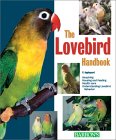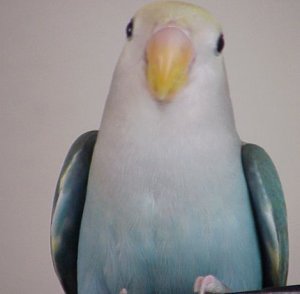My Lovebird Is Biting
Ouch! You know exactly what I’m talking about if you have a parrot that has started biting. We feel betrayed, shocked, dismayed. What did I do wrong? I am going to deal specifically with biting lovebirds, since this seems to be one of the most common problems out there. However, these tips can be applied to most any species.
Babies and Beaks
A baby will explore with its beak. The beak is very sensitive. This is why you should never flick the beak or pull on it to teach a lesson. Also, be careful that you don’t mistake a grip with the beak to help balance itself with a bite. A bird will use the beak as a third hand of sorts. Babies that are still on formula should not be discouraged from exploring with their beaks. Only when the bird is fully weaned and being socialized as a companion should the nibbling be considered an issue.
The Nibbling Juvenile
Biting starts with gentle nibbling. In almost every case where a person has complained to me that their lovebird “suddenly” started to bite, upon questioning they have admitted the bird was nibbling on them for many months before this nibbling just became a bit too aggressive. For this reason, I tell new lovebird owners to discourage nibbling right from the beginning. A firm “No biting!” and moving the bird from your neck or ear (favorite nibbling spots) will stop the nibbling for a few seconds. Many people stop here. They get frustrated and tired of moving the bird away. Don’t give up. The two most important things in training a bird are consistency and clarity. In other words, you need to give the same message all the time, and you need to make that message clear. The command is “no biting” because nibbling is essentially biting in its early stages.
Distraction Method
A very successful method for stopping this nibbling is to distract the bird. A thin strip of untanned leather, or even an unscented Kleenex, can be enough to take your lovebird’s interest away from your skin. Sometimes the bird will be afraid of what you offer at first. Just play with the item as if it is your toy, and you can be sure the bird will want it to be histoy in a matter of seconds.
Holding the Beak
When a bird is persistent about nibbling on your neck, it can be effective to gentle hold the beak between your forefinger and thumb when you say “No biting.” This does not mean that you pull the beak or hit it. It is a very gentle hold for just a second while you give the message, “No biting!”
Time Out
Many people have already let the situation get out of hand, so they have to resort to a time-out cage. This is a small, extra cage that is simply used to teach a lesson. If your lovebird keeps biting you no matter how many times you distract him, move him away, or give him the “no bite” command, sometimes three to five minutes in the time-out cage will help. This cage just has a cup of water and no toys. The bird goes in for never more than five minutes since then it becomes counterproductive. Do not interact with the bird once it goes in the time-out cage. This means no talking, scolding, discussing the issue…just leave him be. When the time is up, open the cage, give the step up command, and start to work with the bird again.










